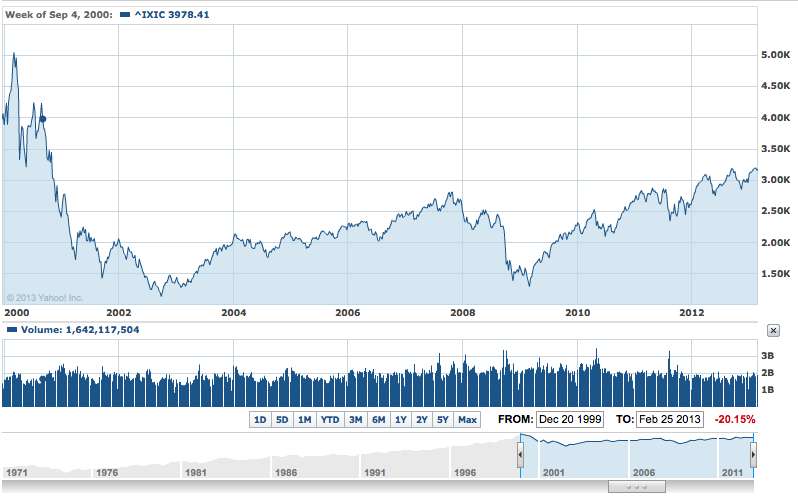Wealth advisor Dan Solin wrote a blog post on The Huffington Post yesterday, slamming Ron Paul for a recent speech he made “disparaging” buy-and-hold investing. But the libertarian may have a point.
Don’t get me wrong; I’m one of the biggest proponents of buy-and-hold investing, as we’ve written time and again on this site. In December 2011, we asked readers “Is Tactical Investing Wall Street’s Next Clown Act?” The evidence just doesn’t support active management, and “tactical” is often just another word for “market timing.” Year after year, S&P Indices research shows that the majority of actively managed mutual funds underperform index funds and ETFs.
Paul reportedly said that had an investor bought into the Nasdaq in 1999 and held through to now, they would’ve lost 40 percent of their portfolio. Of course, we don’t know what period of time Paul was referring to. Solin, a wealth advisor with Buckingham Asset Management, said the period of lowest total returns would’ve been from December 1999 through December 2012, where you would’ve been down 1.3 percent. “That's not great, but it is a far cry from a loss of 40 percent,” Solin writes.
But my calculations came out closer (but not all the way) to Paul’s figure. I looked at the Nasdaq performance from Dec. 20, 1999, to Feb. 25, 2013, and found the stock index to be down 20 percent. If you start from other months in 1999, particularly near the beginning, you’d see double-digit positive returns? What’s to blame for such widely varying returns in one year?
I’m not saying I now subscribe to Paul’s philosophy or the tactical investing craze; this is just to point out that he has a point: buy-and-hold doesn’t always work in every time period and circumstance. And
Paul could not be reached for comment, as he no longer has a website or a campaign manager. (He is, however, working to take RonPaul.com from his fans.)




